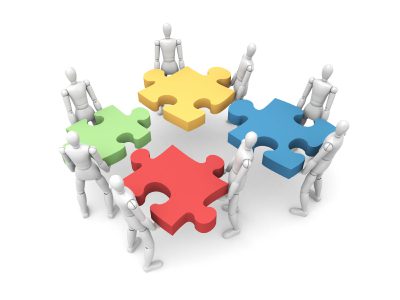How much does an agile project management software differ from a traditional project management software? On short: pretty much. But on the other side both types of products have many things in common.
Many say that agile is not a project management methodology but rather a product development methodology. But in many cases the companies prefer to treat the development as a project and hence the notion of agile project management. Now the agile and traditional approaches are totally different so the first thought would be that the software used to manage each type of projects to be different. The idea is that agile PM is not a method per se, but rather an umbrella term for different processes. In turn, agile processes are very different among them.
In Scrum there are small teams, usually collocated, no project manager, and very often there is no need for a software for the managing the project. The team is self organizing, team members are doing daily meetings, and the project is split in iterations that take maximum one month. At the end of each iteration it is decided the next one and so on… No one wants to loose time by updating a plan that keeps changing or to monitor the daily progress of the team with a project scheduling tool.
In other agile processes the iterations take longer but the main idea is that the project plan, the requirements and the product specifications are subject to change. So a traditional project management software does not solve these needs. Indeed it is necessary to have .a monitoring process for the project and the team, a system for client communication etc. but due to the dynamic nature of the processes there is no needs to have fancy or complicated features. An agile product should be light in functionality, easy to use, easy to access and highly portable.
In some environments like constructions and engineering the project plan must be well defined from the beginning and changes rarely occur. This is the case where the traditional PM methods are a good fit. Due to the complexity of the projects the tools need to be more powerful and to offer more features to support all kind of analysis and constraints, to offer strong resource management capabilities and why not users rights management modules. Since basically the plan is managed by a project manager or by a small subset of decision capable members there is no need for a high collaboration.
So why wouldn’t a traditional PM software be suitable for an agile process? Well… it can be used but it lacks efficiency by over complicating things with features that are not needed. On the other side a traditional PM tool lacks the flexibility in communication that is much needed by agile teams.
PM 1.0 and PM 2.0
Some named traditional project management as being PM 1.0 while the new and improved way of managing projects is PM 2.0. In latter case the accent is put on collaboration by the use of web-based tools in the detriment of more powerful features. By looking at the name PM 2.0 certainly seems better than PM 1.0 but the truth is that there is no clear answer regarding which one is better. It all depends on what type of projects someone is managing. More than probably PM 1.0 will still remain the preferred solution for traditional project management while PM 2.0 will be more suited for agile project management.
In the end it does not matter what type of project management software is used to manage projects as long as the objectives are met. Tools may differ a lot for agile and traditional project management but it is the managers responsibility to choose the right one.



